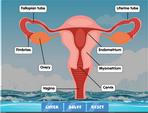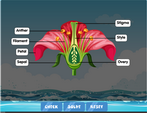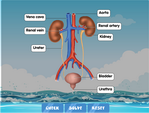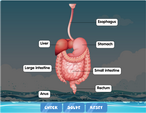Heart diagram labelling quiz
When you make a closed fist, it will roughly be the size of your own heart. In addition, if you close and open your fists around 60 times per minute – the normal resting heart rate for adults - you can catch a glimpse at how hard the heart works to pump blood throughout your body.
Unravelling the Heart: The Science Behind Labelling a Heart Diagram
The human heart, a symbol of love and emotion, is also a marvel of biology. As one delves deeper into the science of the heart, understanding its intricate design becomes paramount. A great way to acquaint young learners with this vital organ's anatomy is through a heart diagram with labelling. Such diagrams make it easier to grasp the heart's structure and function, laying a solid foundation for more advanced study later on.
The Importance of Labelling a Heart Diagram
Learning about the human body is a journey that involves understanding the roles of various organs. The heart, being central to our circulatory system, holds special significance.
Clarity of Structure: A heart diagram with labelling clearly showcases the various chambers, valves, arteries, and veins. This helps learners comprehend the systematic flow of blood throughout the body.
Interactive Learning: Diagrams, especially interactive ones, appeal to visual learners. They facilitate better retention and foster a genuine interest in the subject.
Exploring Online Resources for Heart Diagram Labelling
In today's digital age, there are numerous online resources that make learning both fun and informative. For instance:
Heart Diagram Labelling Quiz: This interactive quiz challenges learners to label the different parts of the heart correctly. It's a blend of learning and gaming, ensuring students remain engaged while absorbing essential information.
Science Games on ESL Games Plus: Dive into a collection of science games that cover various topics, including the anatomy of the heart. These games offer a plethora of interactive exercises to enrich the learning experience.
Tips for Effectively Labelling a Heart Diagram
If you're a parent or educator looking to teach kids about the heart's anatomy, here are some tips to consider:
Start Simple: Begin with the basic parts of the heart, such as the four chambers, before moving on to more complex structures like the aorta or pulmonary veins.
Use Color Coding: Different colors can be used to represent oxygenated and deoxygenated blood paths, making the process more visually intuitive.
Reinforce with Repetition: Encourage learners to revisit the heart diagram with labelling multiple times. Regular interaction will help solidify their understanding.
Conclusion: Heartfelt Learning through Diagrams
Understanding the human heart's anatomy is a stepping stone to broader biological studies. Labelling a heart diagram offers an interactive approach to this subject, ensuring that students not only learn but also enjoy the process. With the aid of online resources and games, the heart's mysteries can be unveiled, one label at a time. So, embark on this educational journey and let young minds pulse with the rhythm of knowledge.
The heart is an extremely vital organ. It pumps blood throughout the blood vessels of the cardiovascular system to supply the body with oxygen and nutrients.
Inside the heart are four chambers - the right and left atria and ventricles – that alternately fill and pump out blood.
Deoxygenated blood enters the right atrium through the vena cava, and are pumped into the pulmonary arteries by the right ventricle to be resupplied with oxygen. Newly-oxygenated blood enters the left atrium through the pulmonary veins. The left ventricle then pumps this blood up the aorta to return to the bloodstream.
Furthermore, the heart also possesses several valves – the tricuspid, pulmonary, mitral and aortic valves – to prevent the backflow of blood.
In this heart diagram labelling quiz, you’ll review the different chambers, valves, and passageways that make up the heart and improve your understanding of how they are associated with the lungs and other parts of the body.











